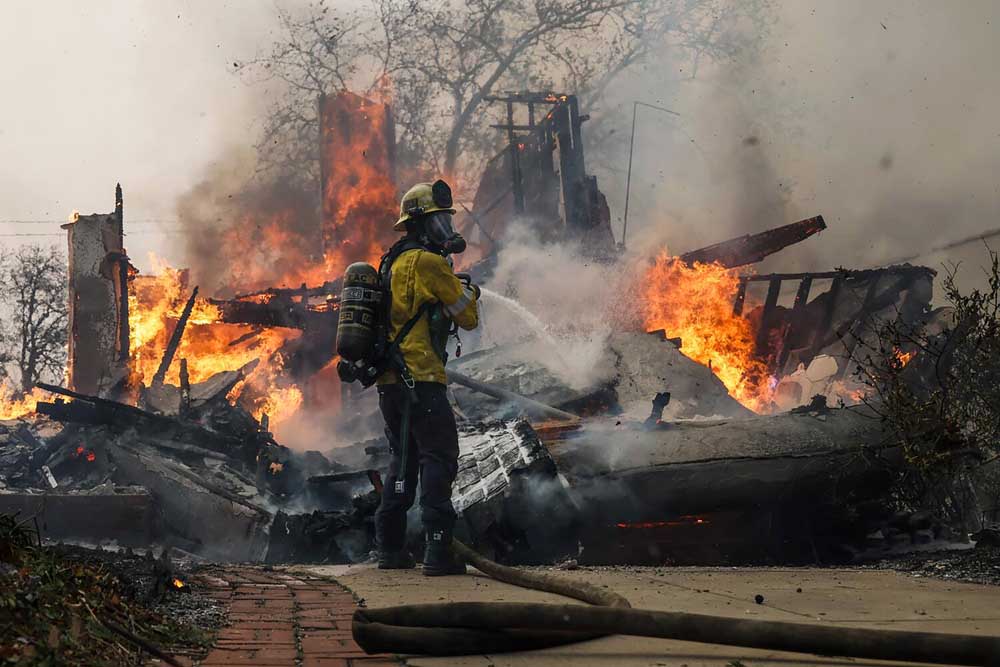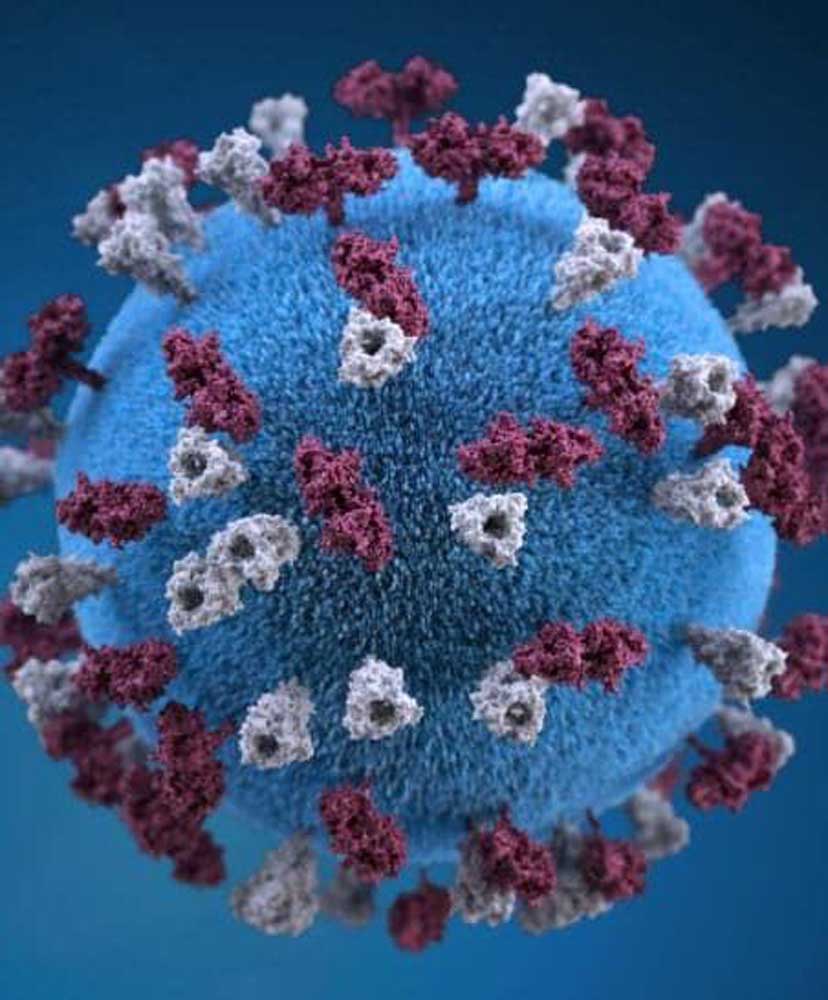Commentary: LA’s wildfire dilemma: Rebuild quickly or rebuild safely?
Published 9:00 pm Thursday, January 16, 2025

- LA County firefighter Scott Takeguma works to douse the flames on home in North Altadena, on Jan. 8.
“My whole life was in that house.”
I’ve lost track of how many friends, acquaintances and strangers have said those words to me in the week since wildfires began to devour a swath of Los Angeles County that’s larger than Boston. But suffice it to say, there have been a lot.
The prevailing mood in Los Angeles is a mixture of anger, shock, sadness, uncertainty and fear. Fire has long been inevitable in California, but not like this.
Roughly 12,000 homes, businesses and schools have burned to the ground in the wealthy Pacific Palisades neighborhood and in working-class Altadena. Tens of thousands have been evacuated, often with only the clothes on their backs. Many don’t have homeowners’ insurance. At least two dozen people are dead. The once-scenic Pacific Coast Highway looks like a war zone.
However, as the saying goes, in every crisis, there is an opportunity. And for a Los Angeles mired in crisis, Democrats — who control power in both the city and the state — have made it clear the opportunity is to rebuild in a way that is resilient to climate change and protects residents at high risk of displacement.
This is a balance that few, if any American cities have managed to strike. Typically, after a natural disaster the wealthy wait out the lengthy environmental clean-up process, then rebuild according to stricter (and more expensive) building codes. Meanwhile, the poor and working-class quickly burn through their savings and often have little choice but to sell to developers and move on. Market forces are against them. The community scatters. The new neighborhood gentrifies.
In 2023, for example, roughly 2.5 million Americans had to leave their homes because of disasters, according to census data. Researchers found that those with the fewest resources were most likely to be displaced.
This is already happening in Los Angeles. Even before the wildfires, the city and county were among the least affordable places to live in the US. Now, there are bidding wars over rental properties, compounding the existing housing shortage and further jacking up housing prices all over Southern California.
All of this is undoubtedly why Democrats at all levels of California’s government are moving faster and cutting more red tape than they ever have after a wildfire, including the Camp fire in 2018, which remains the deadliest and most destructive in the state’s history.
Over the weekend, Governor Gavin Newsom issued a sweeping executive order to suspend requirements for certain building permits and environmental reviews. Los Angeles Mayor Karen Bass followed with her own order, waiving zoning rules to further expedite building and hasten the availability of temporary housing for wildfire victims.
“We want to make sure that associated costs with that are not disproportionate, especially in a middle-class community like this,” Newsom told NBC’s Meet the Press while standing outside of a smoldering home in Altadena.
This is on top of what California Insurance Commissioner Ricardo Lara did last week to prohibit insurance companies — on the hook for as much as $30 billion — from canceling or non-renewing home policies for one year in ZIP Codes affected by the wildfires.
State lawmakers also are considering a $2.5 billion aid package for Los Angeles, including $1.5 billion to prepare for wildfires and other climate disasters, and $1 billion for cleanup and recovery.
And Los Angeles County Supervisor Kathryn Barger got nods of approval when she told several dozen people who lost their homes in Altadena that “our job in government is to get out of the way.”
Still, there is a risk in that, too. Jettisoning regulations could mean newly rebuilt homes won’t be as resistant to wildfires. The executive orders from Newsom and Bass essentially ensure that much of what’s rebuilt resembles what burned down, ostensibly so construction can happen quickly. The homes and businesses must be about same size.
Newsom has waved off such concerns, as have Bass and others. No matter that some hardened homes managed to survive even the extreme winds of the Palisades fire. They insist that whatever gets rebuilt will be “better,” even safer. But they’re light on details.








